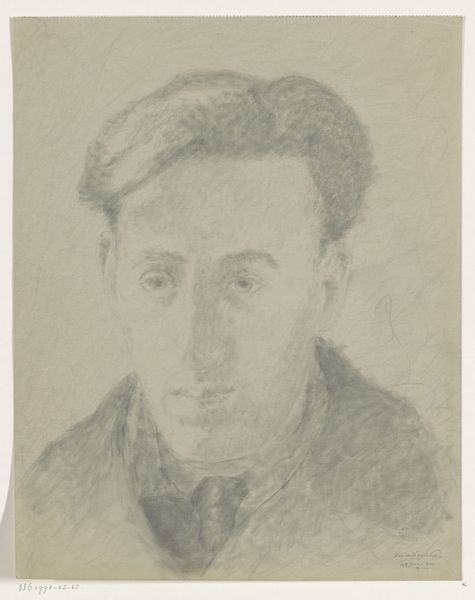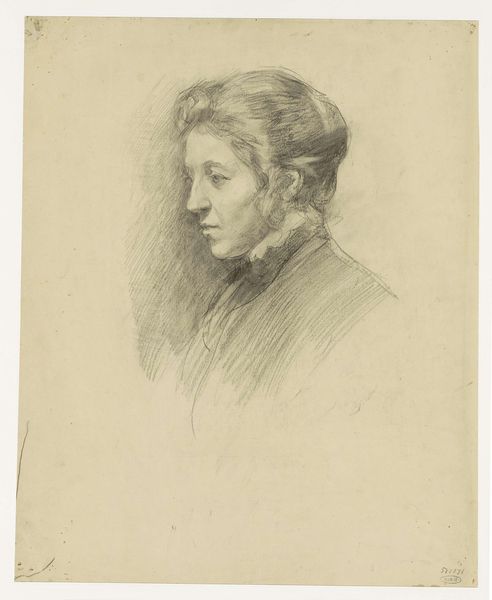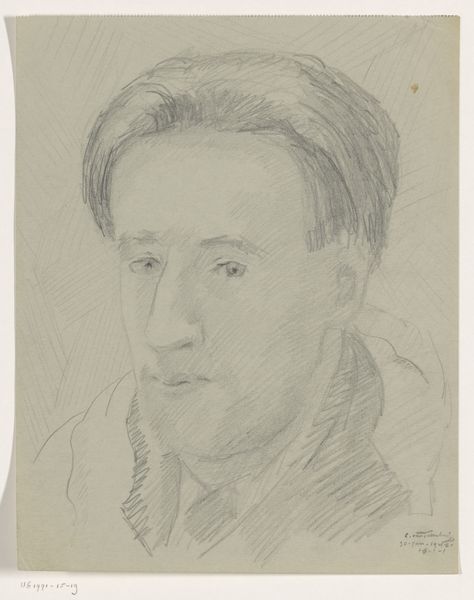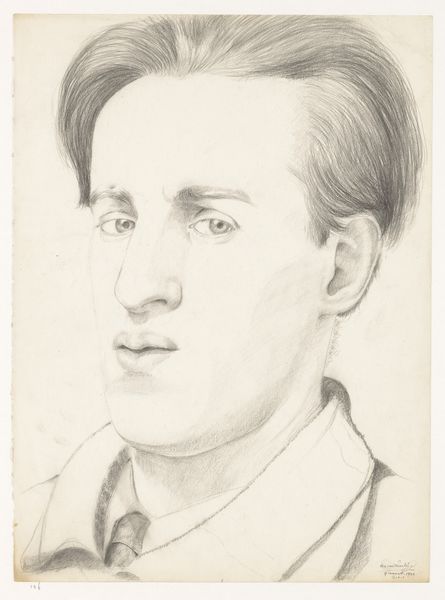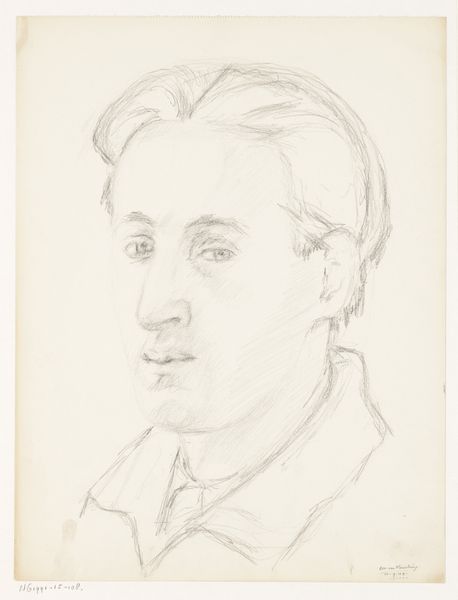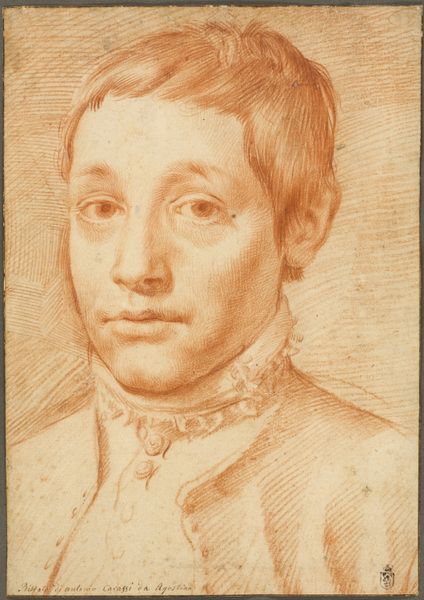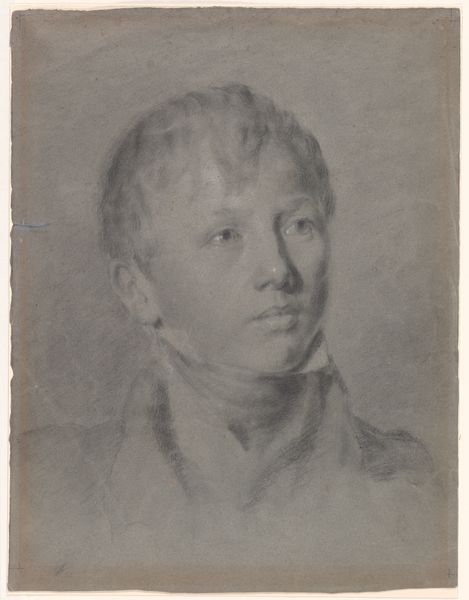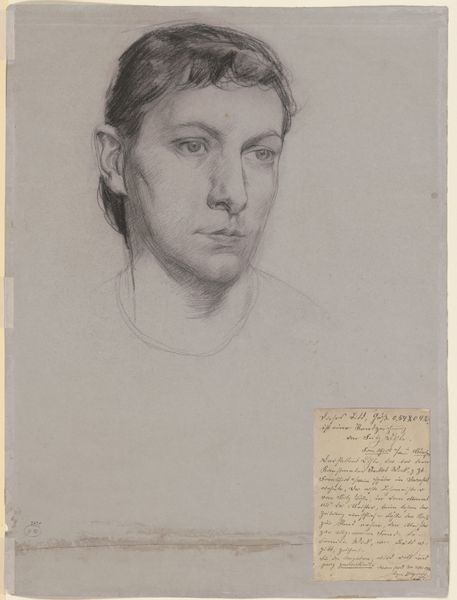
drawing, paper, pencil
#
portrait
#
17_20th-century
#
pencil drawn
#
drawing
#
toned paper
#
facial expression drawing
#
light pencil work
#
pencil sketch
#
charcoal drawing
#
figuration
#
paper
#
portrait reference
#
german
#
pencil drawing
#
pencil
#
portrait drawing
#
pencil work
Copyright: Public Domain
Editor: So, here we have Fritz Boehle's "Head of a Young Man," a pencil drawing. There isn't an exact date associated with the piece, but the museum places it in the 20th century. It’s striking how direct the young man's gaze is, but something about his posture also seems very formal. What stands out to you about it? Curator: It's precisely that tension you've identified, between directness and formality, that piques my interest. A drawing like this, seemingly simple, embodies so much about the societal expectations surrounding youth and representation at the turn of the century. What audience was this for? Boehle likely intended it as a study piece, a preparatory sketch. But considering the context of artistic training in the early 20th century, who was considered worthy of depiction, and in what style? Editor: I see what you mean. The portrait itself becomes an act of selecting and valuing the subject. He is positioned favorably, but doesn't quite transcend the social roles assigned to youth in that period. Curator: Exactly! Think about the burgeoning field of photography at this time. Drawing, particularly portraiture, was starting to be questioned as a valid artistic pursuit. So, why choose this traditional method? Boehle seems to be positioning himself within a specific artistic lineage, validating both the subject and his own skills through this deliberate act of rendering. Editor: It’s interesting to think about the “why” of creating the piece in the first place, and how the socio-political influences changed its context in real time. I'd previously interpreted its historical nature on its face, without as much thought to these shaping forces. Curator: That's often the challenge – moving beyond the immediate aesthetic impression to consider the artwork's participation in broader cultural conversations. Perhaps we can now explore what choices create that particular impact... Editor: Thank you, that's insightful. Considering how museums, galleries, and sociopolitical forces shape our viewing of art adds a critical element.
Comments
No comments
Be the first to comment and join the conversation on the ultimate creative platform.

